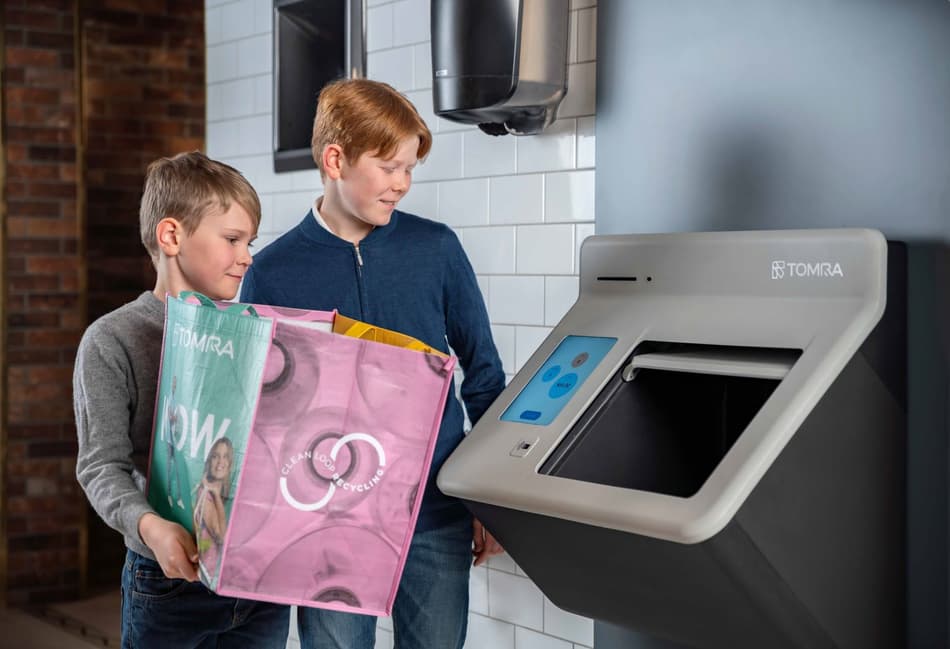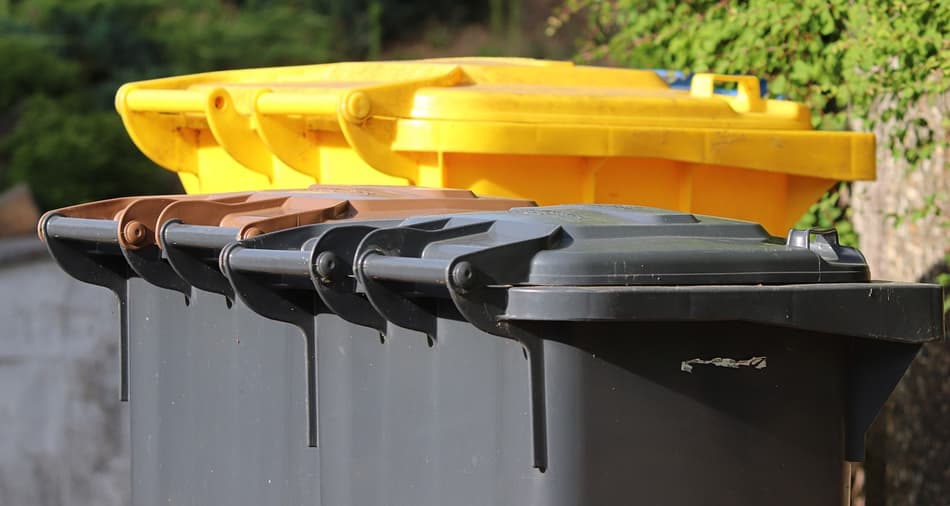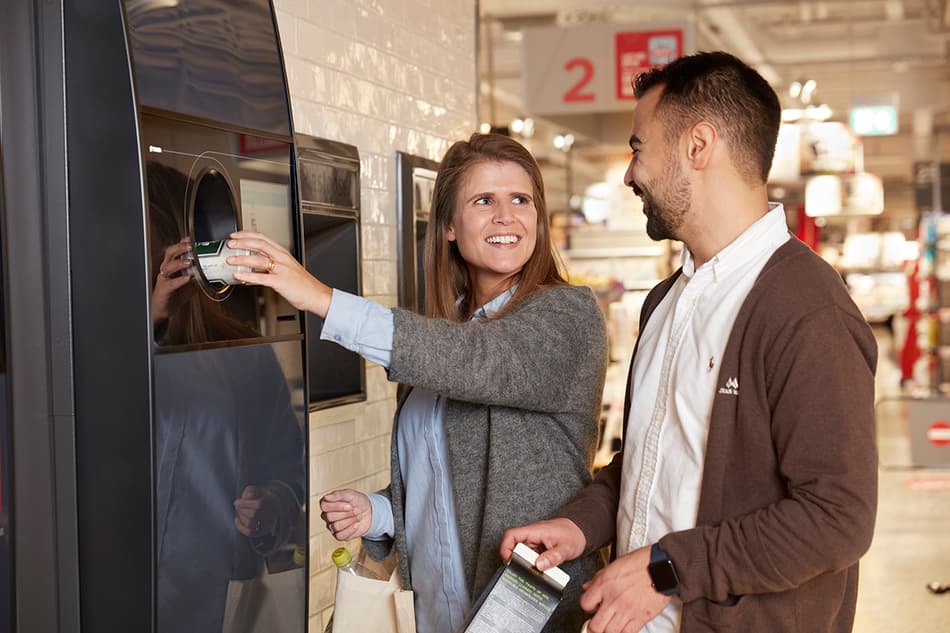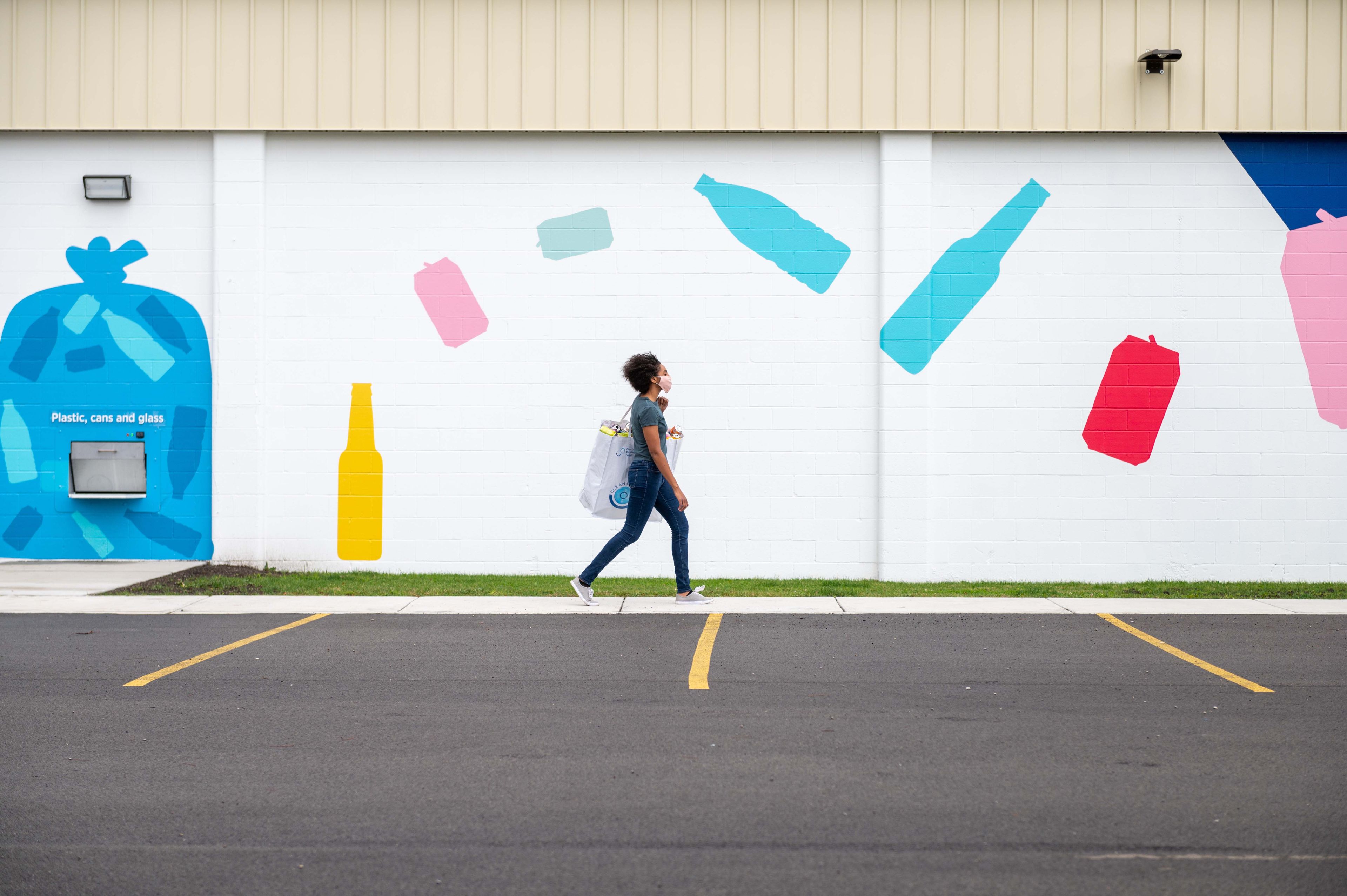
What's the difference between curbside collection and reverse vending machine recycling?
Making sure that waste is handled as effectively as possible is key to building a truly circular economy. Across countries, states, and cities around the world, a few different approaches to waste management are being put into practice. Although they often work differently from one another, the idea of promoting the responsible handling of resources is something they have in common. Two examples of such approaches are:
- The curbside collection of trash. Think about garbage trucks coming past houses or apartments to empty household or community bins.
- The use of reverse vending machines for collecting used drinks containers. In places where deposit return legislation is active, you might see people returning bottles and cans to these machines, whether in supermarkets or other convenient locations.
But what’s the difference between these approaches? And what impact does it have on the materials that make their way through each of them? Well, let’s find out! In this article, we’ll discuss how these two collection methods differ, and how they can work together to efficiently manage resources.
What is curbside collection?
As we mentioned above, curbside collection refers to the gathering of waste from people’s homes, as well as from offices and other locations, by a waste management service.Once collected, the various types of waste are taken to dedicated facilities to be processed. If it’s already been pre-sorted from other waste in some way, as is sometimes the case for glass, paper, or plastics, it might go directly to a location that specializes in working with these materials.

If it’s mixed waste, the different materials (plastics, metals, wood, paper, etc.) will be taken together to a waste sorting facility to separate out the recyclable content that should not be sent to landfill or incineration.
Those recyclable materials can then be taken to a recycling plant, where finer sorting methods are used to create “pure” streams of each material type. In addition, they are washed and shredded in preparation for being turned into high-quality recycled content that can be used to make new products.
There is no “one size fits all” approach when it comes to curbside recycling and many factors – like the country, state, or city that the system is in, the overall population, the materials that are collected, and the range of facilities available – influence how it’s implemented.
Those recyclable materials can then be taken to a recycling plant, where finer sorting methods are used to create “pure” streams of each material type. In addition, they are washed and shredded in preparation for being turned into high-quality recycled content that can be used to make new products.
There is no “one size fits all” approach when it comes to curbside recycling and many factors – like the country, state, or city that the system is in, the overall population, the materials that are collected, and the range of facilities available – influence how it’s implemented.

What is reverse vending machine recycling?
Reverse vending machines are typically used as part of the infrastructure put in place to enable a “deposit return system” (DRS). When a DRS is active, consumers pay a small deposit when purchasing a drink, and when they return the empty drinks container to a reverse vending machine, they get the deposit money back.
Since these machines are normally located in the likes of grocery stores or supermarkets, it’s convenient for consumers to return their containers as part of their existing shopping habits. This makes it a simple and effective way to encourage people to return containers made from valuable, recyclable materials, instead of littering them or throwing them into regular trash cans.
Reverse vending machines are typically used as part of the infrastructure put in place to enable a “deposit return system” (DRS). When a DRS is active, consumers pay a small deposit when purchasing a drink, and when they return the empty drinks container to a reverse vending machine, they get the deposit money back.
Since these machines are normally located in the likes of grocery stores or supermarkets, it’s convenient for consumers to return their containers as part of their existing shopping habits. This makes it a simple and effective way to encourage people to return containers made from valuable, recyclable materials, instead of littering them or throwing them into regular trash cans.
But why might throwing them in the regular trash be a problem? Wouldn’t they just get sorted out at a recycling facility as we explained above?
Well, because beverage containers returned for recycling as part of a DRS are collected and sorted separately (you don’t put other types of trash in a reverse vending machine), the risk of contamination from different kinds of waste is removed.
This separate collection enables containers to maintain their “food-grade” status, meaning they can be recycled into new drink containers, again and again, rather than be downcycled into lower-quality products that will then no longer be recyclable, as is generally the case when no advanced sorting systems are available.
Normally, when a product or material is used and then recycled back into that same product or material, we call it “closed-loop recycling”. At TOMRA, we call the continuous recycling of bottles and cans into new bottles and cans, Clean Loop Recycling. The “Clean” refers to the additional factor of keeping that food-grade status in place.
Curbside collection and reverse vending machines use different methods for the collection and sorting of recyclable material. But both have the same goal of ensuring as much high-quality material can be collected and recycled to be used again.
While reverse vending machines specifically target the collection of used beverage containers for Clean Loop Recycling, curbside collection enables the effective sorting of other recyclable materials. When operating together, these two approaches create a holistic waste management system that enables each resource to be handled in the most responsible way.
These solutions, when working as one, deliver a waste management system that reduces our impact on the environment and protects valuable resources at the same time.
Well, because beverage containers returned for recycling as part of a DRS are collected and sorted separately (you don’t put other types of trash in a reverse vending machine), the risk of contamination from different kinds of waste is removed.
This separate collection enables containers to maintain their “food-grade” status, meaning they can be recycled into new drink containers, again and again, rather than be downcycled into lower-quality products that will then no longer be recyclable, as is generally the case when no advanced sorting systems are available.
Normally, when a product or material is used and then recycled back into that same product or material, we call it “closed-loop recycling”. At TOMRA, we call the continuous recycling of bottles and cans into new bottles and cans, Clean Loop Recycling. The “Clean” refers to the additional factor of keeping that food-grade status in place.
How can curbside collection and reverse vending machines work together to create results?
Curbside collection and reverse vending machines use different methods for the collection and sorting of recyclable material. But both have the same goal of ensuring as much high-quality material can be collected and recycled to be used again.
While reverse vending machines specifically target the collection of used beverage containers for Clean Loop Recycling, curbside collection enables the effective sorting of other recyclable materials. When operating together, these two approaches create a holistic waste management system that enables each resource to be handled in the most responsible way.
These solutions, when working as one, deliver a waste management system that reduces our impact on the environment and protects valuable resources at the same time.

